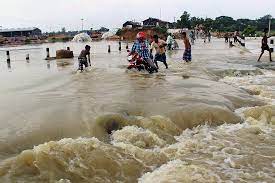New Delhi: Scientists have been warning about climate change and its impact on the environment for many years. These scientists say that due to global warming, many threats related to the environment can be seen in the future. Meanwhile, in a new study, it has been said that due to climate change, some unusual activities can be seen in the Bay of Bengal, South China Sea and South Indian Ocean Sea along the coasts of India.
According to a report published in India Today, this new study may increase the concerns of people living in and around the city along the coast. Because these areas are already at risk of devastating floods. Increased sea wave movement can increase the risk of flooding, as well as affect shoreline configuration. Because of this, infrastructure can be damaged. In which salt water infiltration into underground water, destruction of crops and human population can be affected with a range of social and economic consequences.
The study, published in the journal ‘Climate Dynamics’ Springer, said that strong winds will affect the coastal areas of India’s east and west coast and countries bordering the Indian Ocean, which will have an impact on coastal flooding and shoreline changes.
According to this study, maximum strong wind and wave activities will be seen in the South Indian Ocean region during June-July-August and September-October-November. Areas of the central Bay of Bengal will face higher winds by end-century projections. The waves will intensify to about 1 meter over South Indian Ocean and 0.4 meters in areas of North Indian Ocean, North-West Arabian Sea, North-East Bay of Bengal and South China Sea.
The scientists further examined future wave projections and their relationship to wind speed, sea level pressure and sea surface temperature. The research took into account two different greenhouse gas emission scenarios. The project is called RCP 4.5 and RCP 8.5 by the Intergovernmental Panel on Climate Change (IPCC).
 Indian Thought Latest News & Views
Indian Thought Latest News & Views



